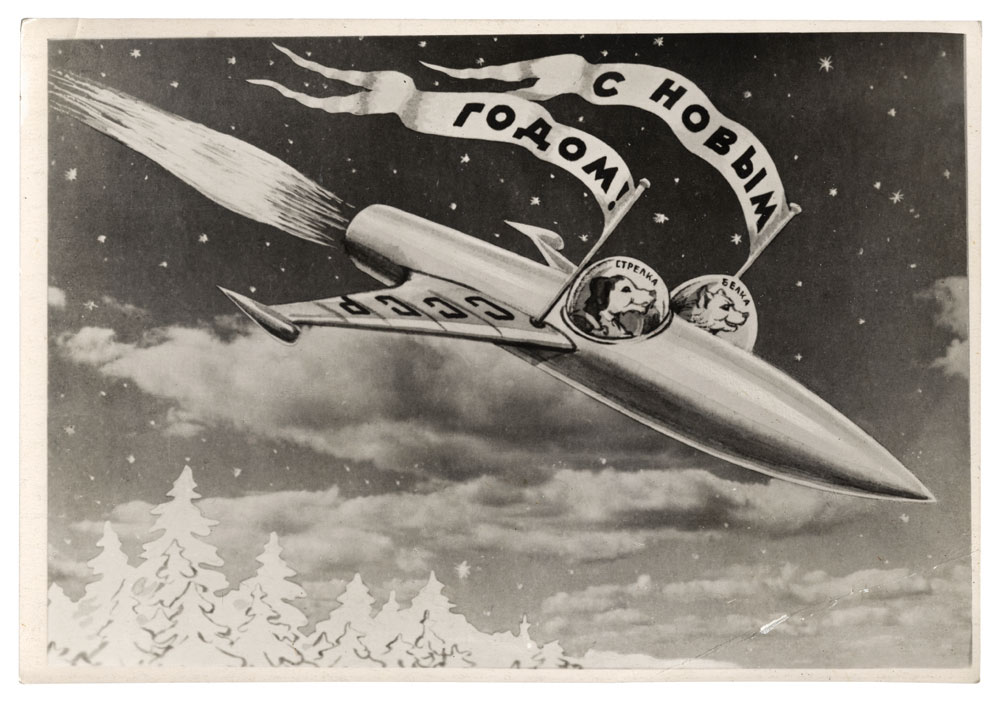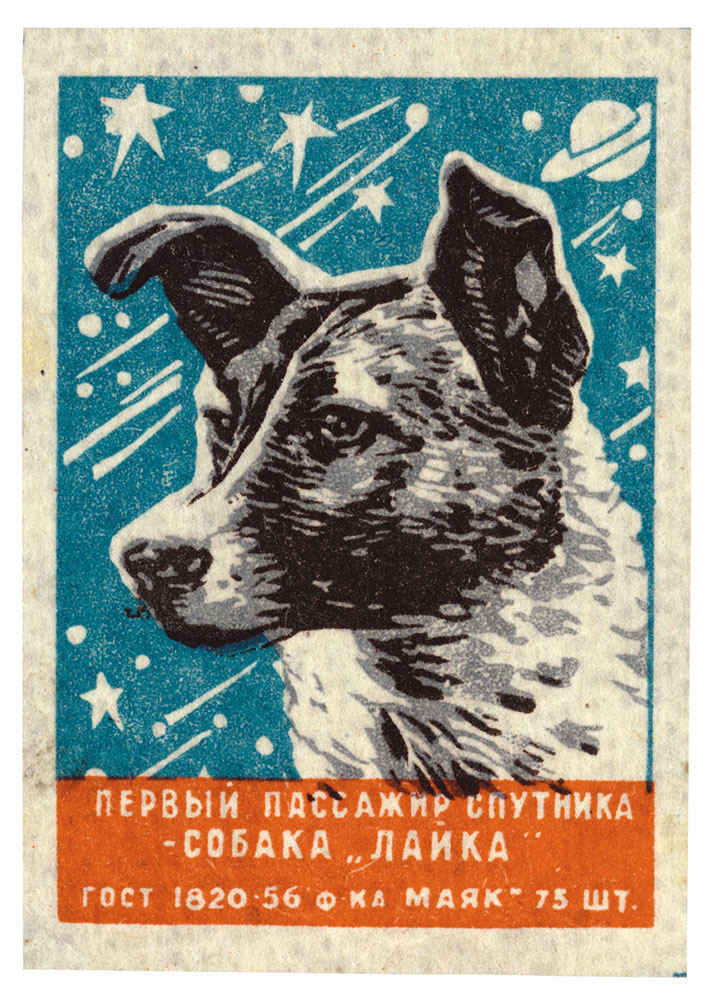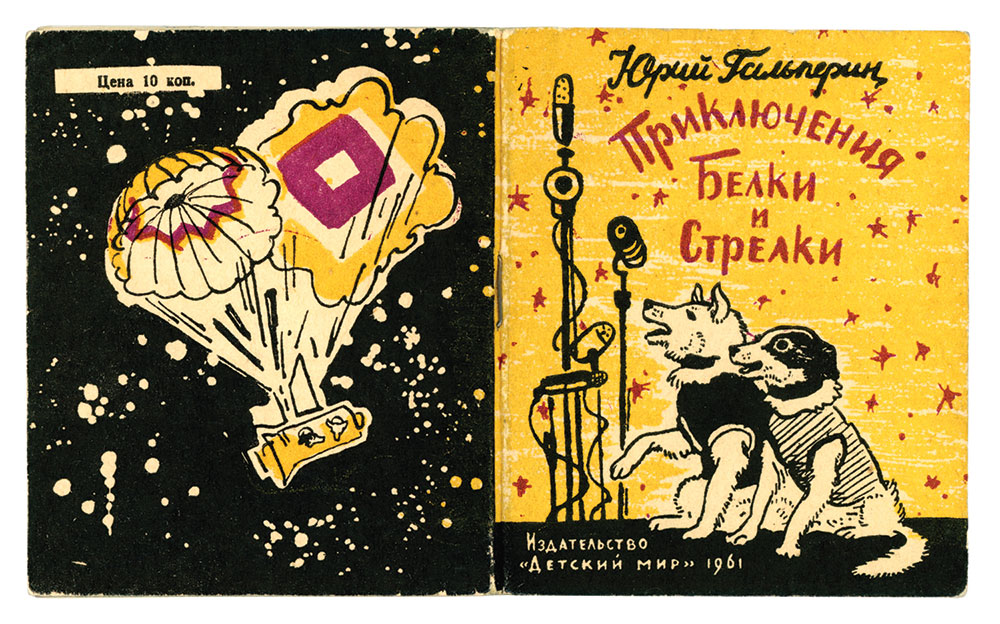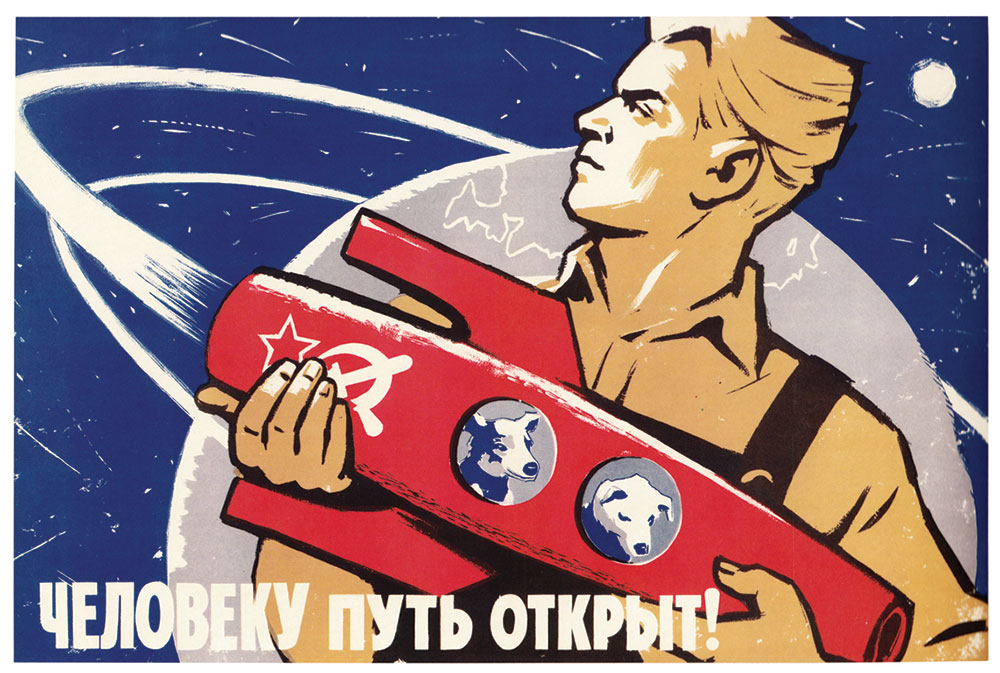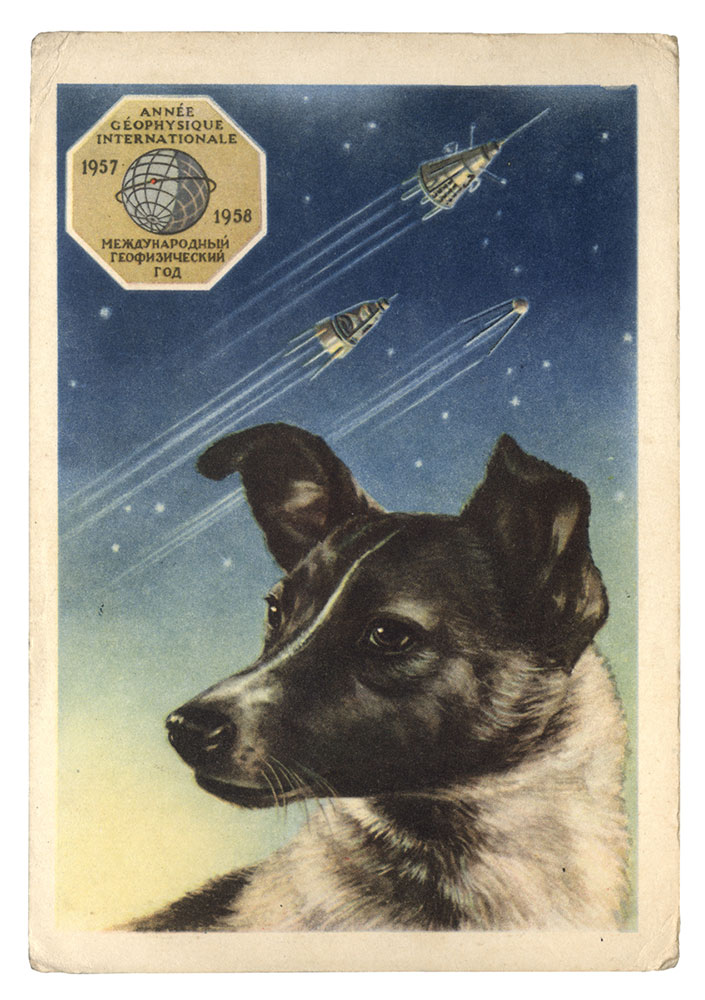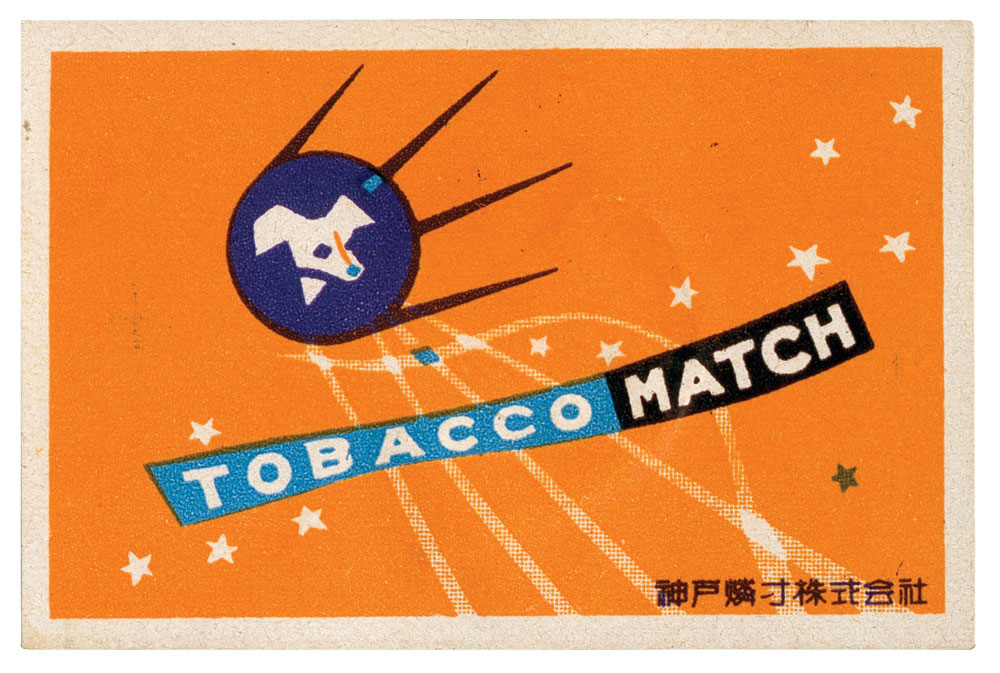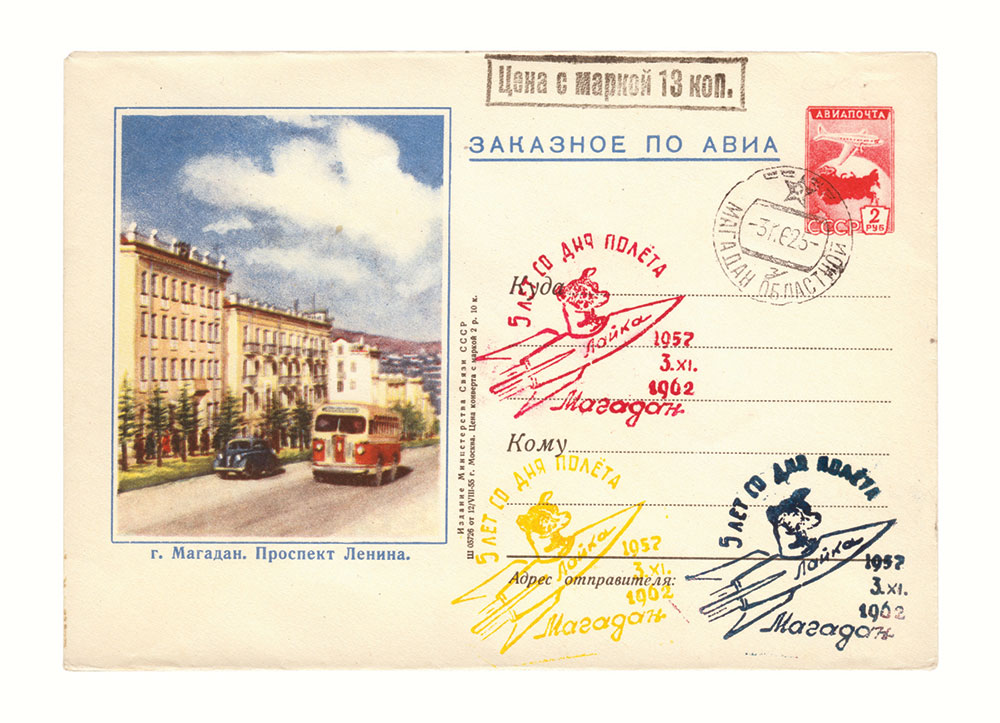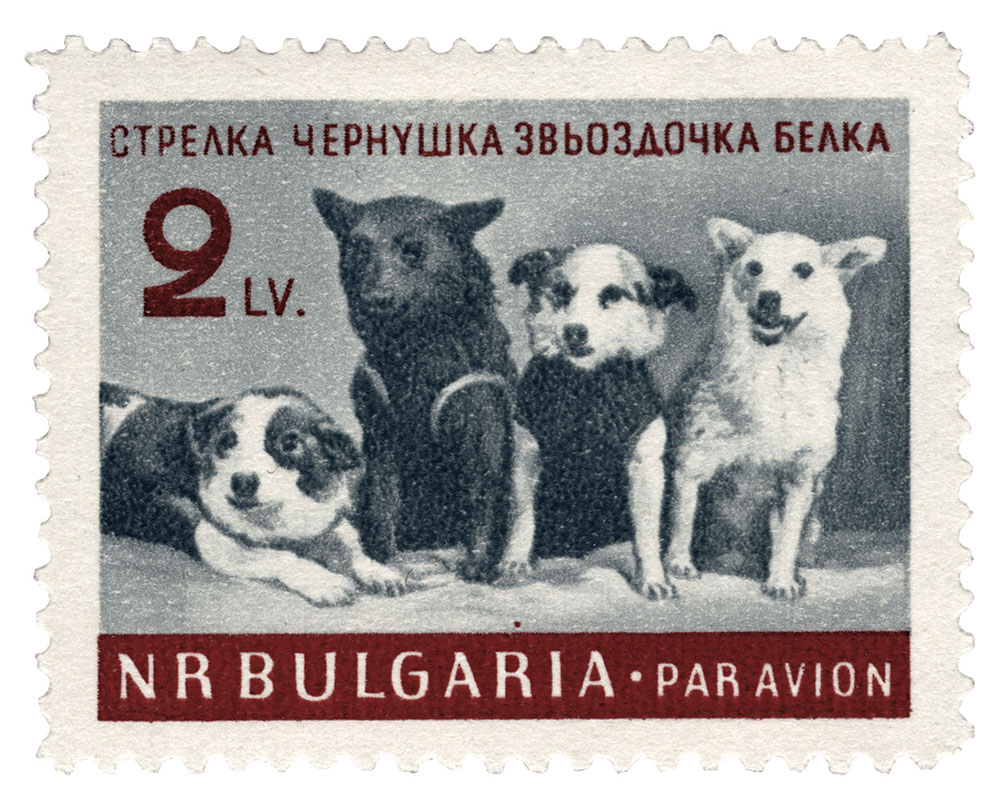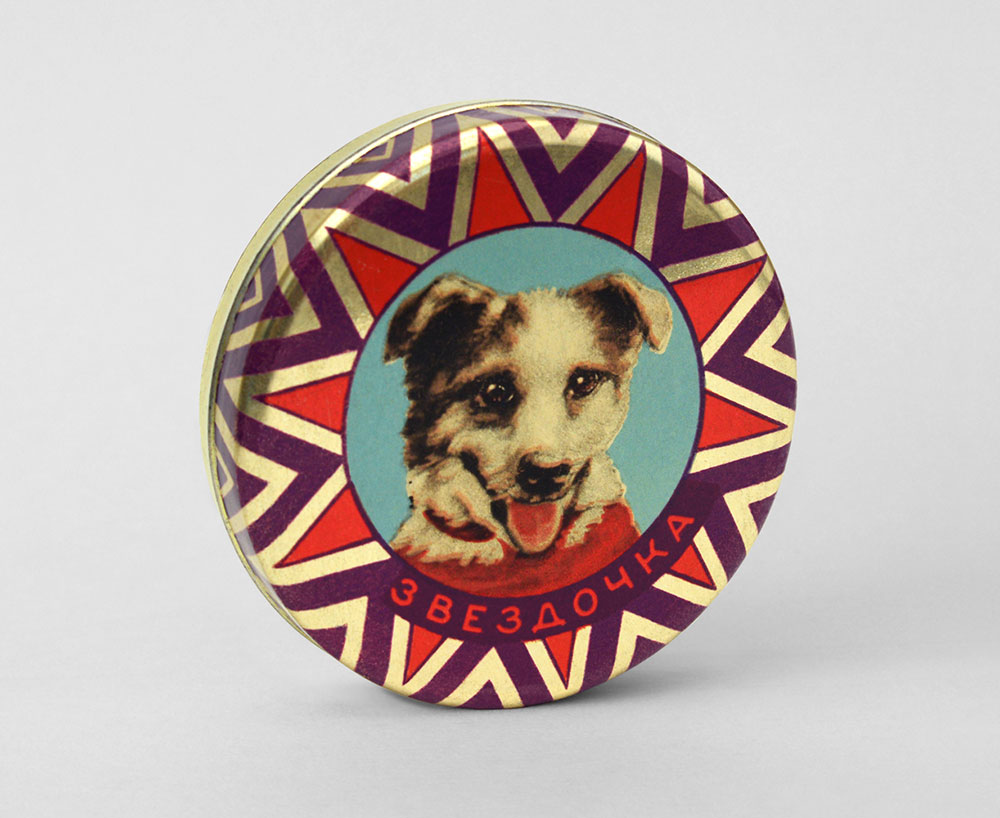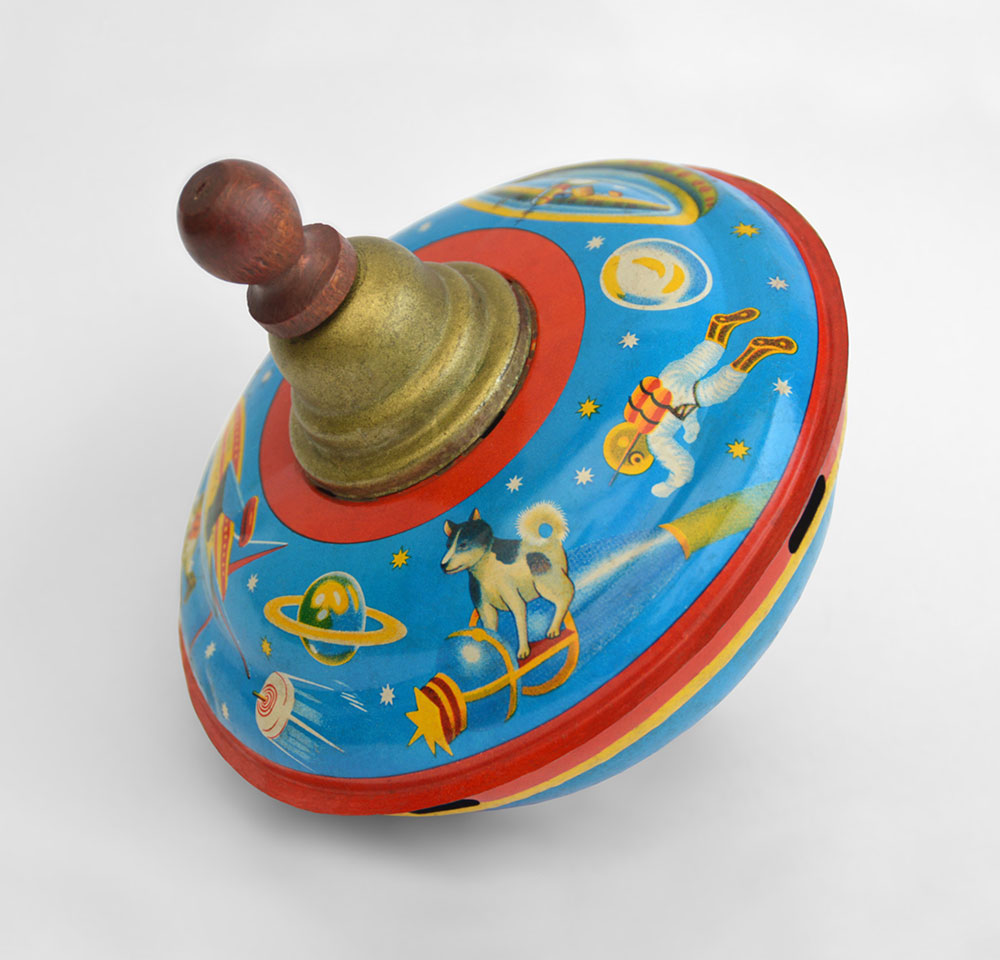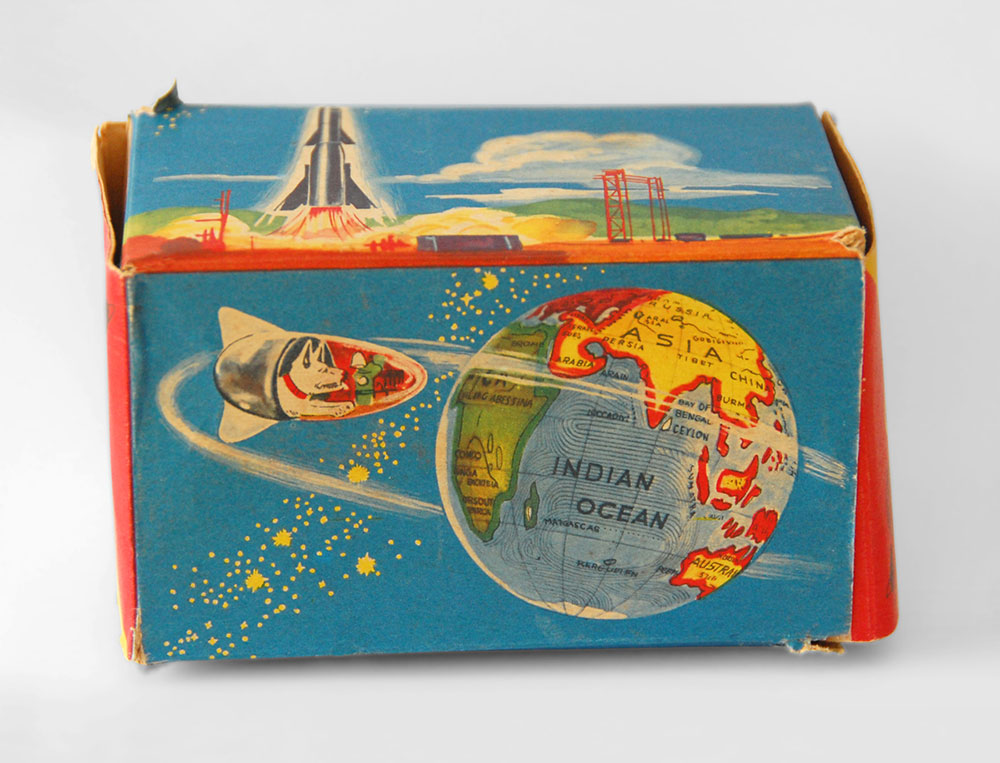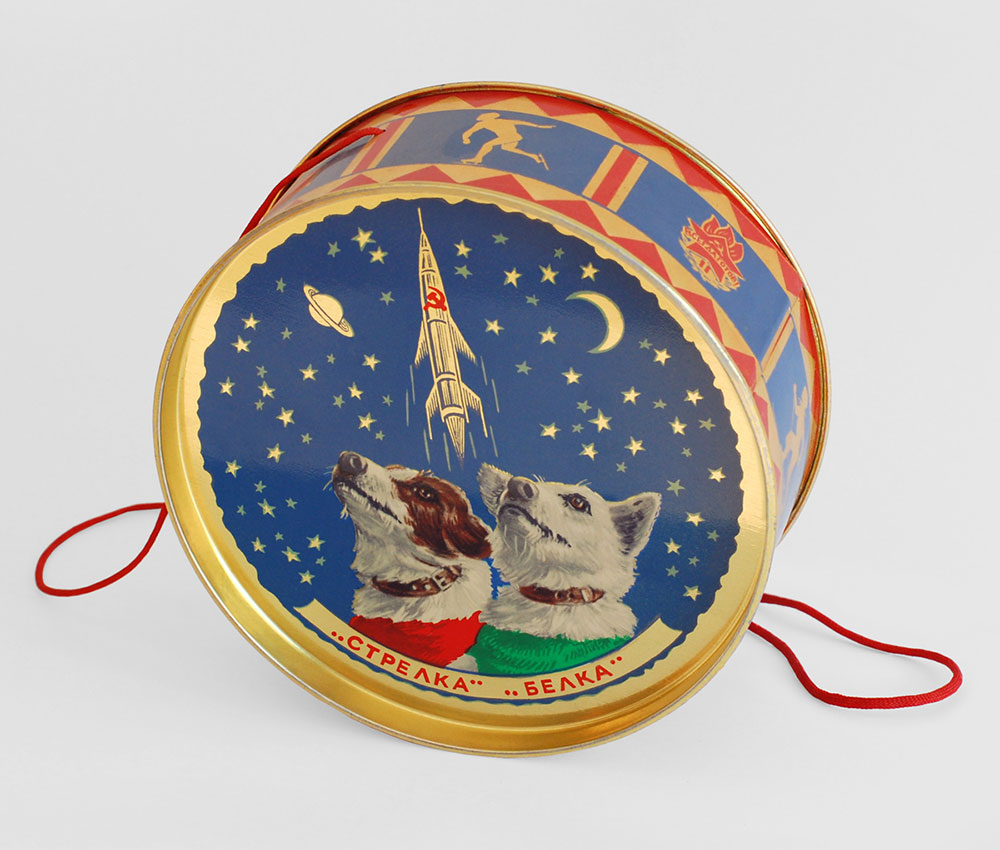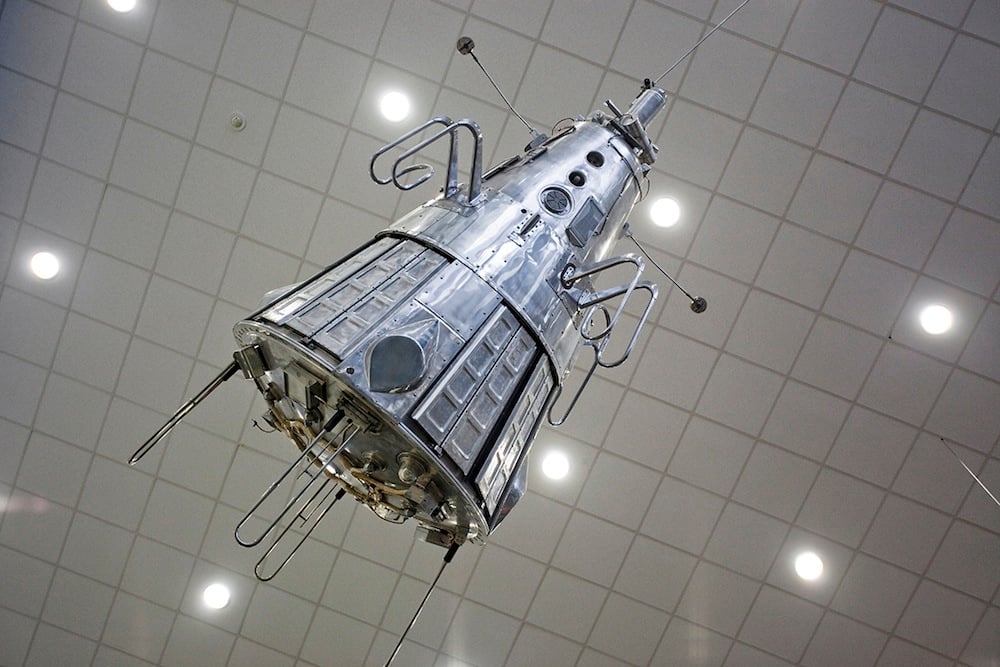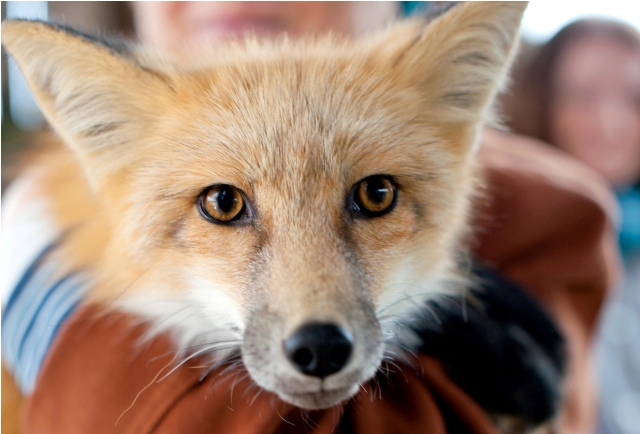Space dogs: four-legged guardians of the galaxy
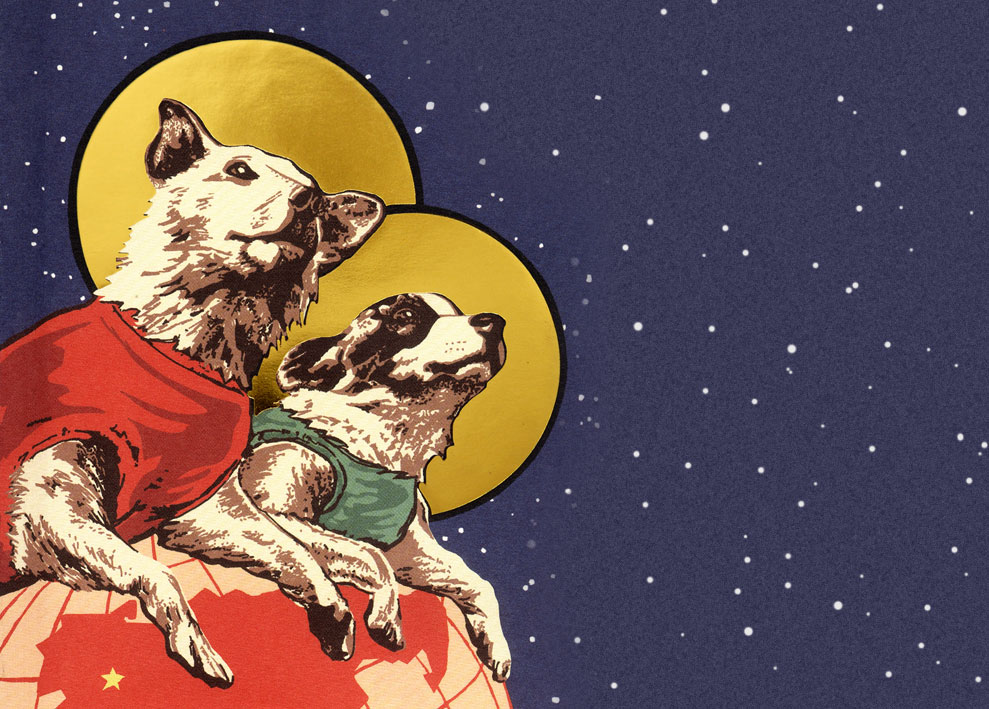
Long after the end of the Soviet space programme, the first canine cosmonauts live on as heroes in Russia's collective memory
Laika, Belka and Strelka are household names around the world, even today. As the first dogs to reach orbit, they are among the martyrs and the saints of communism. Their fate was the embodiment of a utopian consciousness, the ideal of a society that tried to turn a futuristic fairytale into reality. They endured inhumane tests, either giving their lives and becoming posthumous heroes, or surviving to find themselves the darlings of the nation. The lucky ones lived out their days in the laboratory, where those who had lost their teeth would be fed bits of pre-chewed sausage by their devoted attendants. Some were taken home by the scientists as pets in reward for their loyalty and endurance.
The dogs were simultaneously real and fantastical beings. One day they were strays on the street; the next they were in newspapers and on television, and given heroic names. They also became characters in children’s books. Here, they weren’t presented as sly tricksters, like their folkloric predecessors, but neither were they easily fooled simpletons. They gave a new perspective on the allegory of loyalty. The space dog was not just a trusty companion for a lone hero, but crucially, one for all humanity.
The space dog was not just a trusty companion for a lone hero, but crucially, one for all humanity
This new myth, created in front of a watching world, occurred at the crossroads of the USSR’s utopian ideology and its actual early achievements in space. The space dogs’ story retained its sacred character even after the collapse of the USSR, which is why, until very recently, there were no comic strips on the subject. Although the USSR effectively banned comics, considering them a bourgeois genre, it did however produce many humorous captioned drawings of space dogs, which were extraordinarily popular. Like the first cosmonaut, the space dogs became an incontrovertible manifestation of the superiority of the Soviet way: proof that the correct path was being followed.
Popular science films dedicated to the colonisation of space used documentary footage of the dogs taken just before their flights. This was then superimposed onto animated rockets with the same build and trajectory as the Soviet satellites. This technique helped to keep the characters real. In stories, poems, newsreels and films, they became living legends: the cosmonaut dogs that performed intrepid feats. The thin line between fiction and reality remained intact until the release of the animation Belka and Strelka: Star Dogs (2010). Created by Svyatoslav Ushakov and Inna Evlannikova, it presented the dogs as the canine equivalent of superheroes like Spiderman. Belka was even compared to the dog Bolt from the American cartoon of the same name (made by Chris Williams and Byron Howard in 2008). While adhering to the facts, the film tainted the Soviet myth of the space dogs by referencing aspects of American mass culture.
Later, Russians discovered that their canine cosmonaut heroes were also revered in other countries. I’ll never forget how stunned I was by the Soviet space dogs’ Hall of Fame at the Museum of Jurassic Technology in Los Angeles. M A Peer’s arresting portraits of Laika, Belka and Strelka, Zvezdochka and Ugolyok gazed down proudly from their golden frames. The museum walls were clad in red velvet and decorated with the words of Konstantin Eduardovich Tsiolkovsky: “All the universe is full of the life of perfect creatures.” A few years after this encounter, the space dogs flew across the ocean to the Museum of Cosmonautics and Rocket Technology at the Peter and Paul Fortress in St Petersburg (previously the Gas Dynamics Laboratory, where studies into the practical colonisation of space began in the 1930s). Here they were displayed on the “flight deck” of the Tsiolkovsky Hall, underneath a replica of the first Sputnik. Because of a small mistake in the official paperwork, the portraits of the space dogs were delayed by Russian customs for a few days. As the coordinator of the exhibition, I had to make phone calls and write letters to ensure that they could be put on show in their Motherland. That was when the power of the space dogs’ myth demonstrated itself fully. The officials were so moved by the dogs’ fate that they made every possible effort to arrange for their timely landing at the museum.
Later, Russians discovered that their canine cosmonaut heroes were also revered in other countries
The Soviet space myth died with the dissolution of the USSR, but the love for its canine heroes remained. Their story, full of tragedy, possesses very human characteristics. The collective memory of these pioneers of the cosmos can never be replaced; the Soviet space dogs have ascended to their rightful place in the ideological pantheon. It is no coincidence that representations of space dogs on anything from postage stamps to matchboxes, cigarette packets, badges, postcards and children’s books have become popular with collectors.
The space dogs were an instrument of Soviet propaganda, perhaps in its most demonstrative form. Unlike Yuri Gagarin, the first human to orbit the Earth, Laika, Belka, Strelka, Zvezdochka and others had no past or background. The story of their lives began at the Institute of Aviation Medicine and ended there. The scientific biography of a Soviet space dog is described solely in biological parameters. It was left to the ideology of the Soviet system itself to proclaim the story of their epic feats.
Not even perestroika could displace their mythical status. As with many other unknown facts from Soviet history that only came to light following the collapse of communism, the secret experiments in which these brave dogs took part have now been declassified. Scientists have revealed the technicalities of the programme, the details of the dogs who took part, and which of them died in the quest to conquer the cosmos. They have confessed to the torment and misery of Laika, who died only a few hours after the launch of her orbital flight.
Eventually, memorials were erected to these champions of the socialist state. Yuri Gagarin is said to have joked, “Am I the first human in space, or the last dog?” Like the cosmonauts, the dogs suffered in obscurity before their flight, but enjoyed universal fame and material rewards (including all the sausage they could eat) upon a successful landing. The space dogs belong to Soviet consciousness, to the utopia that promised to deliver the very best to humanity. It is not the dogs’ fault that such hopes were never fulfilled; they more than exceeded themselves in their service to man.
This article was originally printed in the book Soviet Space Dogs by Olesya Turkina, published by Fuel Design. The exhibition Beyond Zero curated by Olesya Turkina will open at the Calvert 22 Gallery on 8 October 2014.
